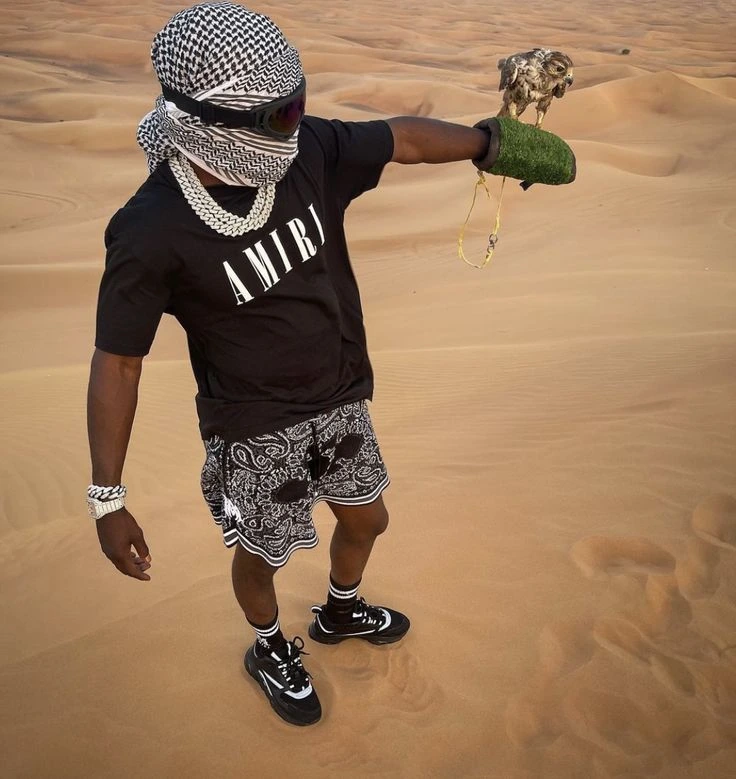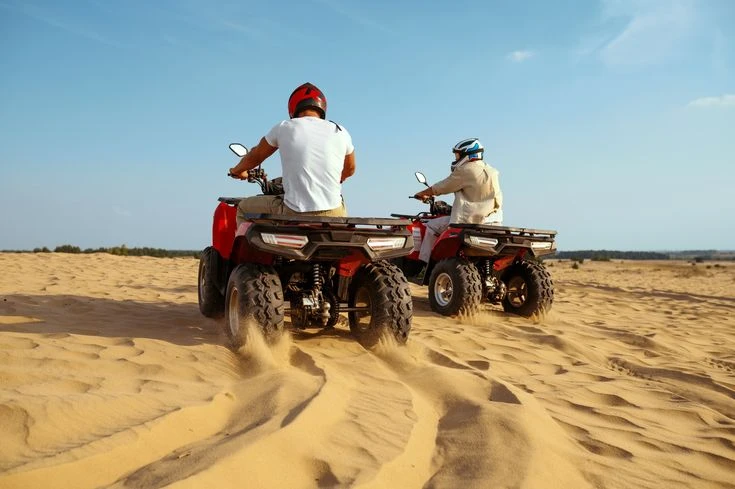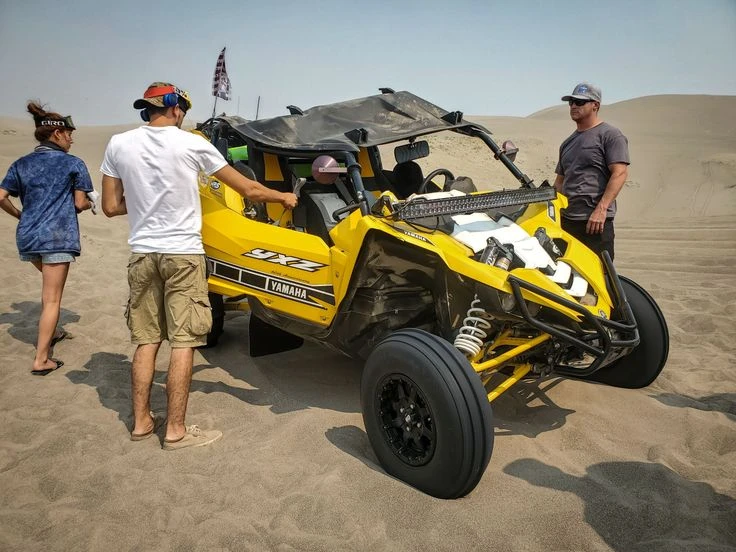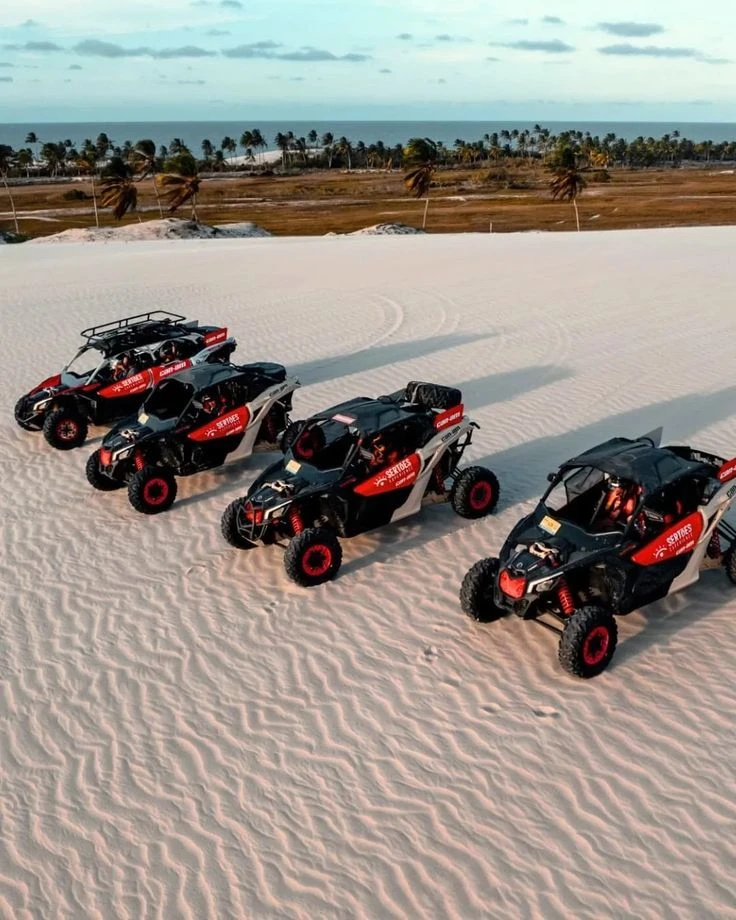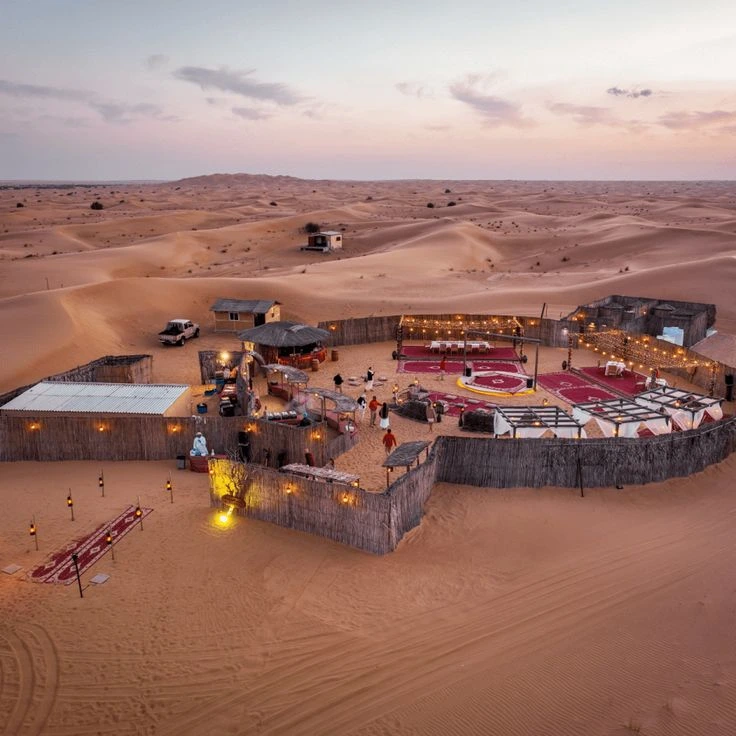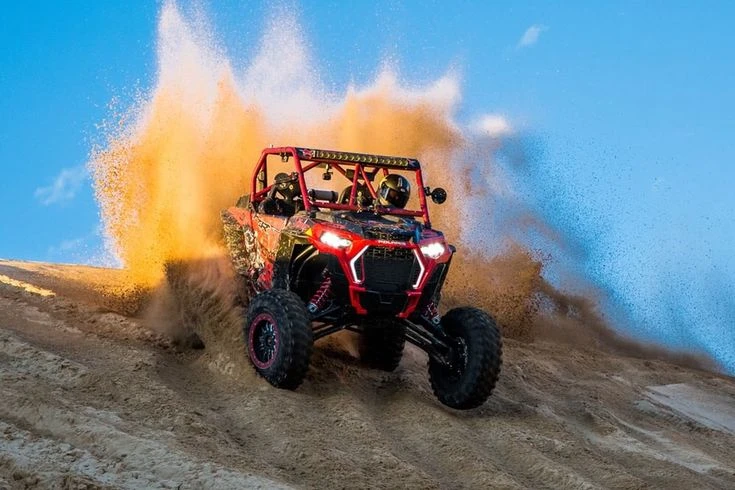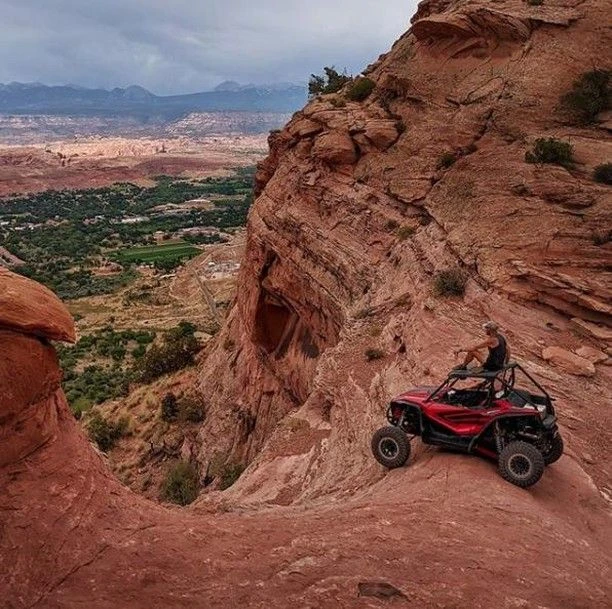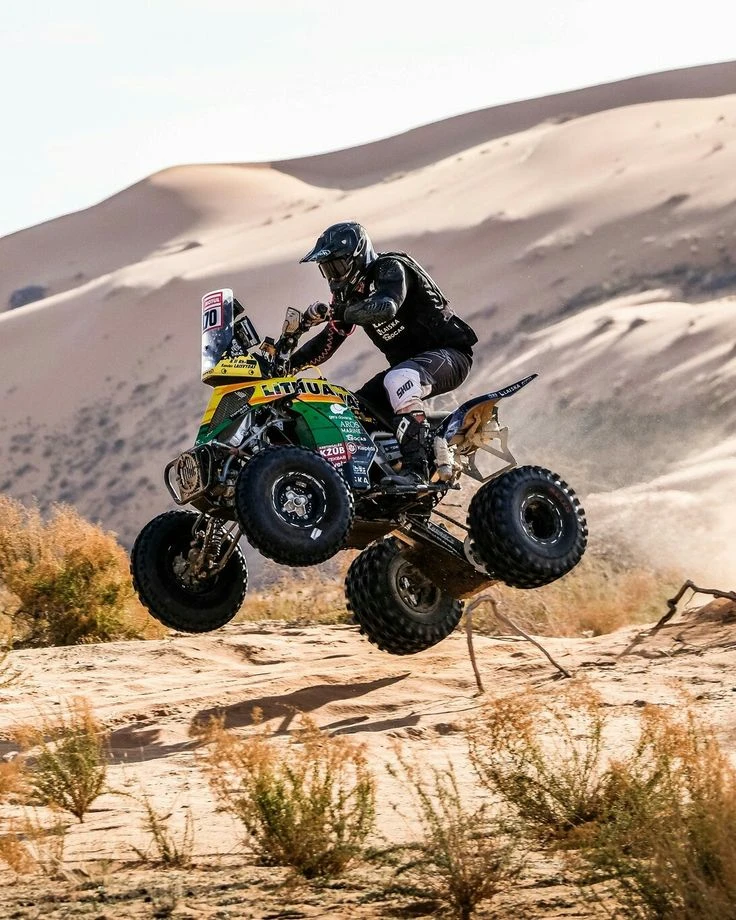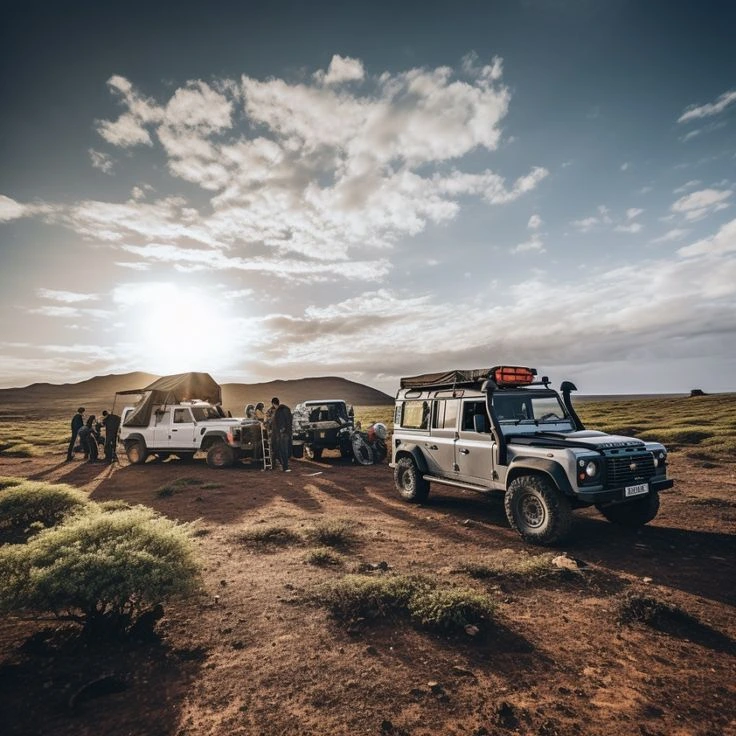What to Wear for a Desert Safari in Dubai: Packing Tips
Preparing properly for a desert safari in Dubai can make the difference between a comfortable, enjoyable adventure and an uncomfortable experience. The desert environment presents unique challenges—from intense sun and heat to cool evenings and sand that gets everywhere. This comprehensive guide will help you pack the perfect wardrobe for your desert safari, ensuring you stay comfortable while respecting local customs and practical considerations.
Understanding Desert Conditions
Before deciding what to pack, it's important to understand the desert environment you'll be experiencing:
Temperature Variations
The desert experiences significant temperature fluctuations that will affect your clothing choices:
#### Daytime Temperatures
**Winter (November-March):** 22-28°C (72-82°F) - Pleasantly warm
**Spring/Fall (April, October):** 30-36°C (86-97°F) - Hot but manageable
**Summer (May-September):** 38-48°C (100-118°F) - Extremely hot#### Evening Temperatures
**Winter (November-March):** 14-20°C (57-68°F) - Can feel quite cool
**Spring/Fall (April, October):** 20-28°C (68-82°F) - Mild and comfortable
**Summer (May-September):** 28-35°C (82-95°F) - Warm eveningsEnvironmental Factors
Beyond temperature, several environmental factors will impact your clothing choices:
**Sun Exposure:** Intense direct sunlight with limited shade
**Sand:** Fine particles that can get into clothing and shoes
**Wind:** Occasional desert breezes that can blow sand
**Humidity:** Generally very low, causing dry skin and lips
**Activity Level:** Varies from sedentary (sitting in camps) to active (sandboarding)Cultural Considerations
While tourist activities have more relaxed dress codes than urban Dubai, cultural sensitivity remains important:
**Modesty Standards:** Less strict in tourist areas but still appreciated
**Local Customs:** Respecting Bedouin traditions and cultural norms
**Photography Considerations:** Clothing that works well in photos
**Religious Periods:** Special considerations during RamadanEssential Clothing Items
Upper Body Clothing
#### For Women:
**T-shirts/Tops:** Lightweight, breathable fabrics with at least cap sleeves
**Long-sleeve Options:** Light cotton or linen shirts for sun protection
**Tunics:** Longer tops that provide both comfort and modest coverage
**Light Jacket/Cardigan:** For evening safaris, especially in winter
**Scarves/Pashminas:** Multi-purpose for sun protection, warmth, or dust**Recommended:** Cotton t-shirts with light long-sleeve shirts that can be removed or added as needed. Breathable fabrics that wick moisture are ideal.
**Avoid:** Very tight clothing, crop tops, deeply plunging necklines, or completely sleeveless tops if concerned about cultural sensitivity.
#### For Men:
**T-shirts:** Lightweight, breathable cotton or technical fabrics
**Long-sleeve Shirts:** Light options for sun protection
**Collared Shirts:** Good option for photos and slight sun protection
**Light Jacket:** For evening safaris in winter months**Recommended:** Moisture-wicking t-shirts with a light long-sleeve option to carry or wear.
**Avoid:** Tank tops if concerned about sun exposure or cultural sensitivity.
Lower Body Clothing
#### For Women:
**Pants:** Lightweight cotton, linen, or technical hiking pants
**Capris:** Good balance of coolness and coverage
**Long Shorts:** Knee-length or longer for comfort and modesty
**Maxi Skirts:** Can work well if not too flowing or restrictive**Recommended:** Lightweight pants with some stretch or convertible pants that can become shorts.
**Avoid:** Very short shorts, tight leggings without coverage, or flowing garments that could catch during activities.
#### For Men:
**Pants:** Lightweight hiking or travel pants
**Shorts:** Knee-length or slightly above
**Convertible Pants:** Practical option that works for changing conditions**Recommended:** Lightweight pants with zip-off legs or dedicated shorts for summer morning safaris.
**Avoid:** Very short shorts or heavy denim jeans.
Footwear
Proper footwear is crucial for comfort and safety during a desert safari:
**Closed-toe Shoes:** Essential for dune bashing and desert activities
**Sneakers/Athletic Shoes:** Ideal for most safari activities
**Hiking Sandals:** Can work for some activities but less protection
**Desert Boots:** Stylish option that works well in sand**Recommended:** Comfortable sneakers or light hiking shoes that you don't mind getting sandy.
**Avoid:** Flip-flops, high heels, open sandals, or brand new shoes that might cause blisters.
Headwear
Protecting your head from the sun is essential:
**Caps/Hats:** Wide-brimmed options provide the best protection
**Bandanas/Buffs:** Versatile for neck protection or dust coverage
**Traditional Headwear:** Some tours offer traditional Arab headwear to try
**Sunglasses:** Essential for eye protection (with strap recommended)**Recommended:** Hat with neck coverage or a combination of cap and bandana.
**Avoid:** Hats that don't secure well (can blow away during dune bashing).
Seasonal Packing Lists
Winter Season (November-March)
#### Daytime Safari:
Lightweight t-shirt or short-sleeve top
Light long-sleeve shirt (can be worn over t-shirt)
Lightweight pants or long shorts
Closed-toe shoes with socks
Sun hat with secure fastening
Sunglasses with strap#### Evening Safari:
Base layer (t-shirt/light top)
Long-sleeve shirt or light sweater
Light jacket or cardigan
Lightweight pants (not shorts)
Closed-toe shoes with socks
Scarf or pashmina for additional warmth
Sunglasses for afternoon portion#### Overnight Safari:
All items from evening safari list
Extra warm layer for night (fleece jacket recommended)
Warm socks for sleeping
Beanie/warm hat for nighttime
Lightweight sleepwear
Change of base layers for second daySummer Season (May-September)
#### Morning Safari:
Very lightweight, breathable shirt (moisture-wicking ideal)
Option for long sleeves for sun protection
Lightweight pants or longer shorts
Closed-toe shoes with socks
Wide-brimmed sun hat with secure fastening
High-quality sunglasses
Bandana/buff for neck protection and dust#### Evening Safari:
Lightweight, breathable clothing
Long-sleeve option for sun protection until sunset
Lightweight pants recommended over shorts
Closed-toe shoes with socks
Sun hat for early portion
Sunglasses
Light scarf or bandana#### Overnight Safari:
All items from evening safari list
Slightly warmer layer for nighttime (light cardigan usually sufficient)
Change of base layers for second day
Lightweight sleepwearAccessories and Additional Items
Sun Protection
**Sunscreen:** Minimum SPF 30, water-resistant formula
**Lip Balm:** With SPF protection
**Sunglasses:** UV-protective with secure fit
**Face Covering:** Bandana or buff for dust and sun protectionPersonal Comfort
**Hand Sanitizer:** For quick cleaning before meals
**Wet Wipes:** For refreshing and cleaning sand
**Small Towel:** Microfiber for multiple uses
**Water Bottle:** Insulated to keep water cool
**Moisturizer:** For after-sun skin care
**Hair Ties:** To secure long hair during activitiesPractical Items
**Small Backpack:** For carrying personal items
**Ziplock Bags:** To protect electronics from sand
**Camera Protection:** Dust covers or simple plastic bags
**Prescription Glasses:** Backup if you wear contacts
**Medications:** Any personal medications neededSpecial Considerations
For Families with Children
**Extra Layers:** Children get cold more quickly in the evening
**Additional Clothing Changes:** Kids tend to get dirtier
**Secure Hats:** With chin straps to stay in place
**Closed Shoes:** Essential for children's safety
**Sun Protection:** Higher SPF and more frequent application
**Comfort Items:** Familiar clothing items for overnight safarisFor Photography Enthusiasts
**Neutral Colors:** Photograph better against desert landscapes
**Avoid Bright White:** Can cause exposure issues in bright sunlight
**Consider Aesthetics:** Desert tones (khaki, tan, soft blues) look great in photos
**Avoid Logos:** For more timeless, natural photos
**Layering Options:** To change looks for different photos
**Traditional Options:** Some tours offer traditional clothing for photosFor Adventure Activities
**Flexible Clothing:** Allows movement for sandboarding, camel riding
**Secure Pockets:** To keep belongings safe during activities
**Quick-Dry Fabrics:** For active participants who might perspire
**Sturdy Footwear:** Especially important for adventure-focused safaris
**Activity-Specific Items:** Gloves for quad biking, etc.What Not to Bring
Clothing to Avoid
**Valuable Jewelry:** Can get lost in sand or damaged
**Expensive Designer Clothing:** Sand and dust can damage fine fabrics
**High Heels or Dress Shoes:** Impractical and potentially dangerous
**Very Revealing Clothing:** May be uncomfortable culturally
**Heavy Jeans or Thick Materials:** Too hot and restrictive
**All-White Outfits:** Show dirt and sand easilyImpractical Items
**Heavy Makeup:** Will likely melt or wear off in heat
**Elaborate Hairstyles:** Wind and activities will affect them
**Dangling Accessories:** Can catch during activities
**New or Expensive Shoes:** Will get very sandy and potentially damagedPacking Tips and Tricks
Layering Strategies
**Base Layer:** Lightweight, moisture-wicking material
**Mid Layer:** Light long sleeves for sun protection
**Outer Layer:** Easy-to-remove jacket or cardigan for evening
**Accessibility:** Pack layers so they're easy to add/removeFabric Choices
**Best Fabrics:** Cotton, linen, technical moisture-wicking materials
**Fabric Weight:** Lighter is generally better
**Sun Protection:** Some fabrics offer UPF (Ultraviolet Protection Factor)
**Quick-Dry Properties:** Valuable for comfort in hot conditions
**Breathability:** Key factor for comfort in desert heatPacking Organization
**Separate Bag:** Keep desert clothes separate from city clothes
**Post-Safari Plan:** Bring a change of clothes to leave in vehicle
**Plastic Bags:** For storing sandy clothes after safari
**Accessibility:** Keep sun protection items easily accessible
**Minimalism:** Don't overpack; simpler is better for desert activitiesCultural Dress Experiences
Many desert safaris offer opportunities to experience traditional clothing:
Traditional Dress Opportunities
**Photo Opportunities:** Many camps offer traditional clothing to try on
**Respectful Participation:** Learning about cultural significance
**Purchasing Options:** Some tours include shops to buy traditional items
**Appropriate Contexts:** Understanding when and how to participateRespectful Approach
**Ask Permission:** Before photographing locals in traditional dress
**Learn About Significance:** Understand the cultural meaning of garments
**Appropriate Appreciation:** Distinguish between appreciation and appropriation
**Support Local Artisans:** If purchasing traditional itemsReal Traveler Experiences
Winter Safari Perspective
"I wore lightweight hiking pants with a t-shirt and brought a light jacket for our evening safari in February. The jacket was definitely needed once the sun set—it got surprisingly cool! Closed-toe shoes were essential during dune bashing, and I was glad I brought a scarf to cover my neck from the sun. My husband wore shorts and was a bit cold in the evening, so pants are definitely recommended." — Sarah, UK
Summer Safari Perspective
"For our morning safari in July, I couldn't believe how hot it got, even at 9 AM. Moisture-wicking fabrics were a lifesaver, and I was grateful for my wide-brimmed hat and sunglasses. I wore lightweight pants with zip-off legs, which worked perfectly. The bandana I brought was used constantly to wipe sweat and occasionally cover my face during sandier moments. Bring more water than you think you'll need!" — Michael, Australia
Family Perspective
"Traveling with our kids (ages 7 and 10), we found that layers were key. The children needed extra sun protection, so we opted for long sleeves despite the heat. We brought a complete change of clothes for each child because they got incredibly sandy during sandboarding. Their favorite desert accessories were the traditional headdresses they got to try on at the camp!" — The Johnson Family, Canada
Frequently Asked Questions
Is there a strict dress code for desert safaris?
There's no strict dress code, but practical, modest clothing is recommended. While desert safaris are tourist activities with relaxed standards, overly revealing clothing may be uncomfortable both physically and culturally. Aim for a balance of comfort, practicality, and moderate modesty.
Can I wear shorts on a desert safari?
Yes, you can wear shorts, especially for morning safaris or in summer months. Longer shorts (knee-length or just above) are preferable both for sun protection and cultural sensitivity. For evening safaris, especially in winter, pants are more comfortable due to cooler temperatures.
Do I need special shoes for a desert safari?
You don't need specialized desert footwear, but closed-toe shoes are essential. Regular sneakers or athletic shoes work perfectly. Avoid sandals, flip-flops, or heels, as these are impractical and potentially unsafe during activities like dune bashing or sandboarding.
What should women wear to respect cultural norms?
Women should opt for clothing that covers shoulders or has at least cap sleeves, and bottoms that extend to the knee or below. This isn't strictly enforced in tourist activities, but shows cultural respect. A light scarf or pashmina is versatile for additional coverage when needed.
How should I dress differently for summer versus winter safaris?
For summer safaris, prioritize lightweight, breathable fabrics with good sun protection. Morning safaris are recommended, with moisture-wicking materials being ideal. For winter safaris, layering is key—the daytime can be pleasantly warm while evenings get surprisingly cool, requiring a light jacket or sweater.
What jewelry is appropriate for a desert safari?
Minimal, secure jewelry is best. Avoid valuable pieces that could get lost in the sand or damaged during activities. Small earrings, a simple necklace, or a secure watch are fine, but leave precious items at your hotel. Remember that sand and dust can damage fine jewelry.
Conclusion
Dressing appropriately for a Dubai desert safari enhances your comfort, enjoyment, and cultural experience. The key considerations are practical comfort, protection from the elements, and modest respect for local customs. By following these guidelines and packing strategically, you'll be well-prepared to fully enjoy the magnificent desert landscape and activities without distraction or discomfort.
Remember that the desert environment presents unique challenges—from intense sun and heat to cool evenings and omnipresent sand. Your clothing choices should prioritize protection, comfort, and versatility through layering. With the right attire, you can focus on the breathtaking experience rather than physical discomfort.
Ready to experience the magic of Dubai's desert with perfect comfort? [Book your desert safari](#booking) today and put these packing tips into practice for an unforgettable adventure.
